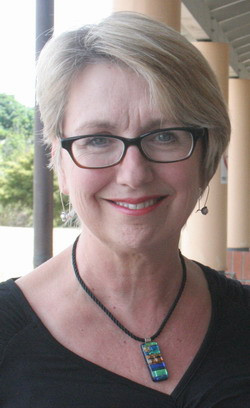More than a quarter of children who took part in a large HRC-funded study of Pacific 11-year-olds failed a hearing test in one or both of their ears. The study’s authors say the findings indicate the need for improved hearing health monitoring of Pacific children in New Zealand beyond preschool.
The study team, led by Professor Janis Paterson from AUT University and Professor Suzanne Purdy, Head of Speech Science at The University of Auckland, carried out audiological assessments on 920 Pacific children with an average age of 11.
The children, who identified themselves as Samoan (47 per cent), Tongan (23 per cent), Cook Islander (14 per cent) or Niuean (4 per cent), are all part of the Pacific Islands Families (PIF) longitudinal study based at AUT University. The PIF study has followed more than 1,000 Pacific children since birth in the year 2000.
The children’s hearing was tested using pure tone audiometry and otoacoustic emissions (OAE), the latter which is also used to identify hearing loss in New Zealand’s infant screening programme. Pure tone audiometry tests how well listeners detect tones across the speech frequency range. OAEs are responses generated by the sensory hair cells in the inner ear. The presence of OAEs indicates a healthy middle and inner ear.
Only 72 per cent of the children passed the OAE test in both ears. The OAE results were consistent with the pure tone audiometry results when hearing thresholds were averaged across sound frequencies to group the children into different categories of hearing loss.
“Based on average hearing at 500, 1000 and 2000 Hz, 28 per cent of the children failed the test in one or both ears, either because of hearing loss or middle ear disease [glue ear]. Ten per cent of the children’s right ears and 11 per cent of their left ears had clinically significant middle ear disease. This is three to four times that reported in non-Pacific 11-year-olds in the Dunedin multidisciplinary study,” says Professor Purdy.
Those children identified as having hearing impediments were referred to a specialist for further free hearing tests thanks to the team’s close collaboration with South Auckland ear, nose and throat surgeon, Mr Zahoor Ahmad.
The study found that many children in the normal hearing category also had some hearing loss at isolated frequencies. Only 18 per cent had normal hearing at all six frequencies in both ears.
The children were also tested for auditory processing disorder (APD), a condition in which a person has normal hearing, but sounds are jumbled during neural processing in the brain.
“As children progress through school, their learning becomes increasingly dependent on good listening skills and the ability to decode new verbal information from their teachers. About a third of the children in our study [35.5 per cent] met the internationally accepted clinical criterion for a diagnosis of APD,” says Professor Purdy.
Diagnosis and treatment services for APD are not currently available in the Counties Manukau District Health Board (CMDHB) area where most of the children in the PIF study group live. However, Professor Purdy has been in discussions with CMDHB staff and Manurewa electorate MP Louisa Wall regarding diagnostic and treatment services for children with APD.
A pilot study is now underway at a Manurewa primary school to improve teachers’ knowledge of APD and use of strategies to support children with APD in the classroom. The Ministry of Health is also currently reviewing its policies on managing APD in New Zealand children.
“Across New Zealand, many more Pacific children fail the B4 school check hearing test and have greater levels of hearing difficulties than non-Pacific children,” says Professor Paterson.
“Our study of the PIF children when they were 2-years-old showed very high rates of glue ear. The hearing and middle ear results for these children at age 11 indicate that these problems have not resolved by the time they’ve reach the end of their primary school years.”
The researchers say they weren’t expecting hearing problems in the study to be so widespread as there’s a general view that children will “grow out of” middle ear disease and auditory processing difficulties, and that hearing loss associated with middle ear disease is transient.
“We can’t establish a causal link between previous middle ear disease and poor hearing sensitivity at age 11. However, this disease is likely to have contributed to so few children in our study having completely normal hearing,” says Professor Purdy.
For more Pacific health research news, check out the latest issue of HRC Pacific News.
